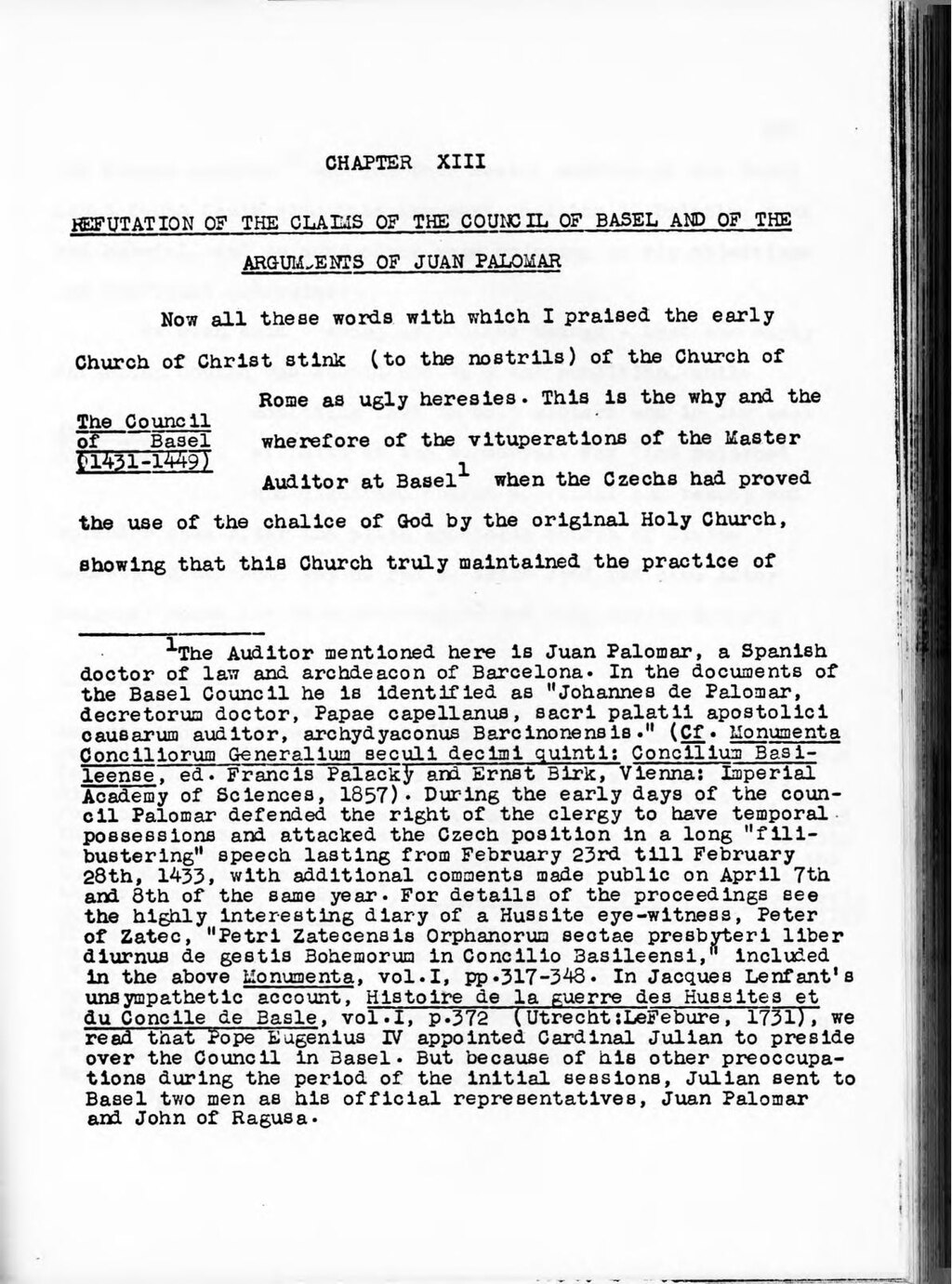CHAPTER XIII
REFUTATION OF THE CLAIMS OF THE COUNCIL OF BASEL AND OF THE ARGUMENTS OF JUAN PALOMAR
Now all these words with which I praised the early Church of Christ stink (to the nostrils) of the Church of Rome as ugly heresies.The Council
of Basel
(1431–1449) This is the why and the wherefore of the vituperations of the Master Auditor at Basel1 when the Czechs had proved the use of the chalice of God by the original Holy Church, showing that this Church truly maintained the practice of
1 The Auditor mentioned here is Juan Palomar, a Spanish doctor of law and archdeacon of Barcelona. In the documents of the Basel Council he is identified as "Johannes de Palomar, decretorum doctor, Papae capellanus, sacri palatii apostolici causarum auditor, archydyaconus Barcinonensis." (Cf. Monumenta Conciliorum Generalium seculi decimi quinti: Concilium Basileense, ed. Francis Palacky̍ and Ernst Birk, Vienna: Imperial Academy of Sciences, 1857). During the early days of the council Palomar defended the right of the clergy to have temporal possessions and attacked the Czech position in a long "filibustering" speech lasting from February 23rd till February 28th, 1433, with additional comments made public on April 7th and 8th of the same year. For details of the proceedings see the highly interesting diary of a Hussite eye-witness, Peter of Zatec, "Petri Zatecensis Orphanorum sectae presbyteri liber diurnus de gestis Bohemorum in Concilio Basileensi," included in the above Monumenta, vol.I, pp.317–348. In Jacques Lenfant's unsympathetic account, Histoire de la guerre des Hussites et du Concile de Basle, vol.I, p.372 (Utrecht:LeFebure, 1731), we read that Pope Eugenius IV appointed Cardinal Julian to preside over the Council in Basel. But because of his other preoccupations during the period of the initial sessions, Julian sent to Basel two men as his official representatives, Juan Palomar and John of Ragusa.
